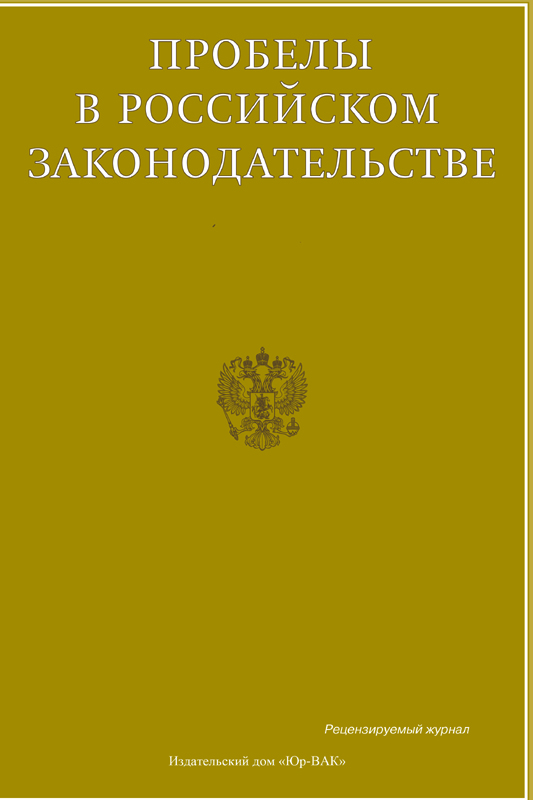Features of the Use of Digital Technologies in Countering Cyberterrorism
- Авторлар: Tsrimov A.A.1
-
Мекемелер:
- North Caucasus Institute for Advanced Studies (branch) of the Krasnodar University of the Ministry of Internal Affairs of Russia
- Шығарылым: Том 15, № 4 (2022)
- Беттер: 145-148
- Бөлім: Articles
- URL: https://journals.eco-vector.com/2072-3164/article/view/531630
- ID: 531630
Дәйексөз келтіру
Аннотация
The purpose of this study was to study the possibilities of digital technologies in countering cyber terrorism, which means the commission of terrorist acts using computer and telecommunication technologies. A distinctive feature of this type of terrorism is that cyber terrorists resort to using the achievements of scientific and technological progress (personal computers, smart phones, the Internet) to carry out terrorist attacks. As a rule, the result of a cyber terrorist act is the theft of secret data by the defense industry and various government agencies of the state, theft of funds and information from banks, individuals and legal entities. To combat cybercrime and cyber terrorism in particular, law enforcement and international agencies have also begun to master the use of digital technologies to counter terrorists and extremism. In particular, it can be seen that some states are joining their forces for a joint fight against terrorism. The main task of law enforcement agencies is to develop methods for tracking crypto currencies, as well as attracting the tax service to tax crypto currencies. Crypto currency cannot be left unsupervised by the state, its turnover must be controlled, and if it is found to be used in illegal activities, the person who used it for this must be punished. It has been established that an important aspect of the fight against cyber terrorism and the use of digital technologies for criminal purposes is the training of law enforcement officers. By all means, it is necessary to avoid the catastrophic consequences of hacker attacks that encroach on non-Russian life support systems for people, power systems, railways, a critical information structure, etc. And the solution to this problem should be a priority task for both police officers and other bodies - the prosecutor's office and the federal security service. Involving them in the investigation or search for terrorists will have a positive effect on the fight against terrorism.
Негізгі сөздер
Толық мәтін
Авторлар туралы
Amir Tsrimov
North Caucasus Institute for Advanced Studies (branch) of the Krasnodar University of the Ministry of Internal Affairs of Russia
Email: amir8301@mail.ru
police lieutenant colonel, Senior Lecturer, Department of Fire Training Nalchik, Russia
Әдебиет тізімі
- Abidov R.R. Globalization of the information space as a resource base for cyberterrorism // Gaps in Russian legislation. 2021. V. 14. No. 4. pp. 116-119.
- Gedgafov M.M. The development of cyberterrorism in the context of the globalization of the information space // Education and Law. 2021. No. 6. S. 304-308.
- Zvereva E.B. Cybercrime as a threat to the security of modern society: types, features, methods of struggle and prevention // Young scientist. 2020. No. 10 (300). pp. 35-37.
- Kamergoev B.M. Cybercrime as a phenomenon of cyberterrorism in the global information space // In the collection: Intellectual capital of the XXI century. Collection of articles of the IV International Research Competition. Penza, 2021, pp. 56-58.
- Konev D.A. Digital technologies and crime // Yurist-Pravoved. 2021. No. 2 (97). pp. 224-228.
- Ordokov M.Kh., Shafieva E.T. The main trends in the fight against cyber fraud // Gaps in Russian legislation. 2021. V. 14. No. 4. pp. 108-111.
- Tarchokov B.A. trends in the development of cybercrime in the global information space // Problems of Economics and Legal Practice. 2021. V. 17. No. 1. pp. 198-201.
- Tarchokov B.A. On countering the threats of cyberterrorism in the global information space // Public Service and Personnel. 2021. No. 1. pp. 148-150.
- Fakov A.M. Cyberterrorism in social networks as a real threat to state security // Eurasian Law Journal. 2020. No. 5 (144). pp. 445-446.
- Khamurzov A.T. Cyberterrorism: New Challenges and Countermeasures // Journal of Applied Research. 2021. V. 2. No. 3. pp. 74-77.
- Khachidogov R.A. Cyberterrorism in the global information space: new challenges and countermeasures // Education and law. 2021. No. 6. pp. 362-366.
Қосымша файлдар








